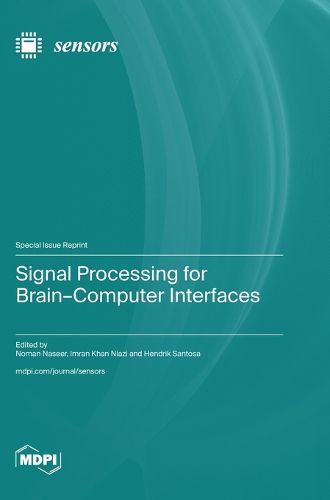Readings Newsletter
Become a Readings Member to make your shopping experience even easier.
Sign in or sign up for free!
You’re not far away from qualifying for FREE standard shipping within Australia
You’ve qualified for FREE standard shipping within Australia
The cart is loading…






This title is printed to order. This book may have been self-published. If so, we cannot guarantee the quality of the content. In the main most books will have gone through the editing process however some may not. We therefore suggest that you be aware of this before ordering this book. If in doubt check either the author or publisher’s details as we are unable to accept any returns unless they are faulty. Please contact us if you have any questions.
With the astounding ability to capture a wealth of brain signals, Brain-Computer Interfaces (BCIs) have the potential to revolutionize humans' quality of life by processing these brain signals for controlling external devices. Being an emerging and innovative field, BCIs offer numerous applications in various fields of life, including robotics, education, prosthetics, security and communication technologies. Processing neuro-physiological signals, a major component of BCIs, involves further procedures of (1) noise removal, (2) feature extraction and (3) classification. Pre-processed signals are subject to various noises, including power line noises, physiological noises, motion artifacts and interference noises. These noises can affect the efficiency of the entire BCI procedure. For this reason, noise removal algorithms are utilized for noise removal or reduction. Next, the process of feature extraction begins, in which algorithms are used to acquire relevant task-based features. This phase acquires data based on spectral, spatial and temporal domains. The last step for signal processing is classification, whereby the acquired and processed features are converted into viable commands, which ultimately control external devices. This reprint focuses particularly on these three signal-processing techniques.
$9.00 standard shipping within Australia
FREE standard shipping within Australia for orders over $100.00
Express & International shipping calculated at checkout
This title is printed to order. This book may have been self-published. If so, we cannot guarantee the quality of the content. In the main most books will have gone through the editing process however some may not. We therefore suggest that you be aware of this before ordering this book. If in doubt check either the author or publisher’s details as we are unable to accept any returns unless they are faulty. Please contact us if you have any questions.
With the astounding ability to capture a wealth of brain signals, Brain-Computer Interfaces (BCIs) have the potential to revolutionize humans' quality of life by processing these brain signals for controlling external devices. Being an emerging and innovative field, BCIs offer numerous applications in various fields of life, including robotics, education, prosthetics, security and communication technologies. Processing neuro-physiological signals, a major component of BCIs, involves further procedures of (1) noise removal, (2) feature extraction and (3) classification. Pre-processed signals are subject to various noises, including power line noises, physiological noises, motion artifacts and interference noises. These noises can affect the efficiency of the entire BCI procedure. For this reason, noise removal algorithms are utilized for noise removal or reduction. Next, the process of feature extraction begins, in which algorithms are used to acquire relevant task-based features. This phase acquires data based on spectral, spatial and temporal domains. The last step for signal processing is classification, whereby the acquired and processed features are converted into viable commands, which ultimately control external devices. This reprint focuses particularly on these three signal-processing techniques.